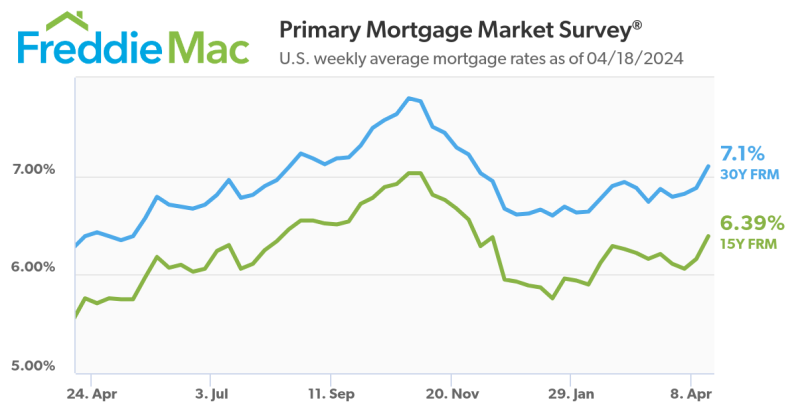Advertisement
What About Those Consumers Who Fall Outside of QM?

Just a few months into the era of qualified mortgage (QM) lending and loan origination levels are lows last seen in 2008. Stories about consumers who seem like they should be able to qualify, but are unable to secure an approval, are on the rise. There has already been a hearing on Capitol Hill regarding the potential QM pitfalls and there are several entities looking at ways to approve more consumers without repeating previous mistakes that led to the very tight lending standards now in place.
With claims of redlining, concerns about fair access to mortgage loans and disparate impact also increasing, pressure to improve the system will be coming soon. Complicating this matter are lingering problems with documenting the credit reports between borrowers who had a previous short sale, versus the borrowers who previously had an actual foreclosure. Additionally, the questions about the credit data accuracy levels typically associated with consumers on the border of credit worthiness and it becomes apparent that this is not an easy task. To accomplish this there needs to be improvement to the mortgage credit reporting process that provides an opportunity to better document the true credit risks of the non-QM consumer.
A proposed solution
The solution comes from the mortgage credit reporting agencies: The participant in the mortgage industry best suited to document consumer credit data on a conflict free basis with regard to the outcome of the loan. Their only concern is for completeness and accuracy of the report so as to limit the legal liability they hold to both the consumer and the lender who hires them. The solution is a new report: The “QMCR–the Qualified Mortgage Credit Report” and “QMCR Score,” which would provide a deeper review of the consumer’s credit when a formula to detect credit concerns is triggered. This new report would include verifying disputed data and the inclusion of non-traditional or alternative data not currently reported to the National Credit Reporting Agencies (NCRAs). This report should be required to be built from the current tri-merged mortgage credit report, and triggered when the consumer’s specific credit history contains the following criteria:
►A middle credit score less than the lowest allowed for the lender’s best rate, and
►A greater than 25 point spread between the high and low scores
In the current mortgage underwriting process, the middle credit score is the most important as it is used to price the loan by the lender. If that score is more than the score level pre-determined by the lender at which consumers receive the best interest rate (using 720 as the score required for the best rate in this example), the lender proceeds with the current credit reporting process without change. If the middle score is less than the 720 example, and the other two credit scores not used in the pricing of the loan (the high and low of the three scores) have less than a 25 point difference between them, the lender again proceeds as before using a risk-based pricing model that is currently a standard practice in mortgage lending. When those high and low scores have more than a 25 point spread; however, the lender would be required to add the proposed QMCR to the current process.
This change only occurs when the consumer’s specific credit situation warrants an additional credit review, which can be layered in as needed by the specific risks. After perpetration of the QMCR and the QMCR Score (approximately three business days) the loan could be sent back through the automated underwriting system for consideration of inclusion as a “qualified” loan for approval. It is imperative for both the safety of the lending institution and the mortgage applicant that this application is not underwritten with questionable credit data or potential missing accounts that could skew debt to income ratios.
Many features of the QMCR would be similar to the time tested and proven Residential Mortgage Credit Report (RMCR) requirements that were drafted, and agreed to by Fannie, Freddie, HUD, FHA and VA as the only acceptable mortgage credit documentation prior to automated underwriting. The RMCR standards are still claimed to produce the best quality credit reports, but require manual underwriting by the GSEs. The new QMCR and Score would allow for automated underwriting and include a summary of the derogatory data on the consumer report for an added value of both accuracy and financial literacy. The summary would also include a statement about the disclosure of all creditors, even those not being reported to the NCRAs, and the legal responsibility and benefit to report them to the mortgage consumer reporting agency to eliminate the conflict of interest of the mortgage originator potentially filtering debt to income altering disclosures.
The QMCR and QMCR Score is a hybrid approach that incorporates the evaluation of more than 40 years of mortgage credit reporting processes. It includes the best practices of the automated underwriting technology systems that revolutionized the mortgage process in the mid-1990s, as well as the safeguards that have protected the lending industry and consumers for decades.
This is all possible with technology currently in place, if the industry wishes to embrace higher credit reporting quality. It has been said that to ignore history you doom yourself to repeat it. Are we going to repeat the previous errors or learn from them?
Terry W. Clemans is executive director of the National Consumer Reporting Association (NCRA). He may be reached by phone at (630) 539-1525 or e-mail [email protected].
About the author





